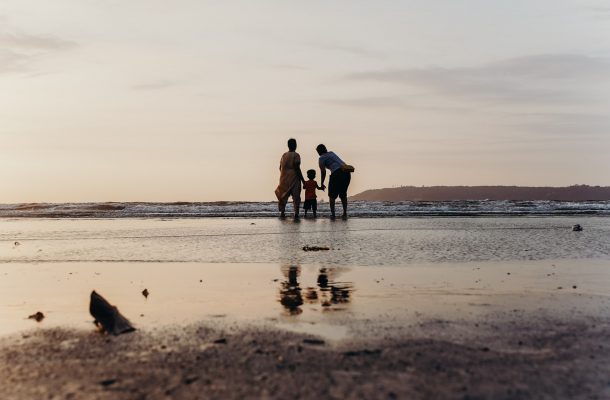Taking back the beach

During Australia’s early lockdown period, images of Bondi and other Sydney beaches painted a particularly worrying picture for local governments and public health officials.
Despite social distancing requirements and the imposition of outdoor gathering limits to slow COVID-19’s spread, April sun and unseasonably warm temperatures saw masses of beachgoers descend on Bondi and several other Sydney beaches.
Sunbathing, the use of communal showers and group exercise continued as usual and the surrounding promenade and grassed areas also teemed with locals and tourists alike. Be it a denial of the situation or a complete disregard for government calls, Sydney’s Waverly and Randwick Councils were forced to close beaches to the public.
For many Australians going to the beach for a weekend swim and ice cream is almost a birth right. Beaches and ocean baths are important public assets. Governments involvement in their protection and maintenance is considered fundamentally important to ensuring access and enjoyment for all.
To see beaches locked off, fenced and physically under surveillance challenges the very premise and characteristics underpinning public goods.
Against the backdrop of CVOVID-19 restrictions, the roles of lifesavers fundamentally changed. No longer scanning the water for swimmers at risk, they were co-opted as security personnel preventing swimmers from disobeying closure directives.
Even as restrictions have begun to ease, beach goers and their activities continue to be closely monitored and regulated. While swimming and surfing is now permitted, restrictions include limiting the number of users to 500 at any one time. In a bid to maintain social distancing and allied restrictions, designated entry and access points remain in place on several beaches.
The removal of bollards and barriers does not ensure accessibility for all
As the bollards, barriers and chains preventing access are removed, we argue there are remaining tensions and gaps between the principles underpinning non-excludability and the assertion that use by one individual does not reduce its availability to others.
Through referencing our research in progress and prior scholarship, this article explores how for many people – including women and culturally diverse (CALD) communities – the beach often remains a contested space.
Applying a historical lens, we see that despite swimming’s many health and safety benefits, women’s admission to and freedoms in these public spaces have been closely regulated and mediated by segregation and modesty down the years. For example, women’s aquatic dress was once highly regulated to ensure decorum and propriety. Furthermore, significant restrictions were placed on when and where women could bathe.
Swimming was thought a suggestive pursuit and social mores suggested women’s bodies ought not be on display. In the contemporary context women’s beach bodies are still regulated and observed, albiet in different and more complex ways.
While the beach is touted as a space where a sense of freedom and escapism can be enjoyed, prior scholarship has illuminated how normative ideals regarding women’s beach bodies, typically slim, toned and bronzed, shape women’s beach experiences.
Norms and expectations of appearance, the pressure to conform or a failure to meet these expectations can heighten women’s sense of being watched. Often conceived as “the male gaze” – a term coined by feminist critic Laura Mulvey to delineate how women are depicted from a masculine point-of-view as objects of male pleasure – many women seek out alternative spaces to enjoy the ocean.
Randwick City Council’s McIver’s Ladies Baths are a topical case in point. The Baths opened formally in 1876 and are the last remaining women’s-only seawater pool in Australia. It is thought that Indigenous Australian women occupied this space for a significantly longer period before then.
For many, the McIver’s Baths are sacred, as they hold the spirits of all the women who have swum there over the years. According to the female volunteers of the Randwick and Coogee Swimming Club who run the pool, the Baths have become popular with pregnant women and new mums. Muslim women are also increasingly occupying this female-only space.
Although largely used today for recreation, the Baths have an important historical connection with the growth of women’s competitive swimming in NSW.
However, the ocean pool’s status as women-only was, for a time, particularly problematic. Although the State Government granted the pool an exemption from the New South Wales Anti-Discrimination Act in 1995, much social and politically charged debated ensued.
While it is unlikely the site’s status as women-only will again be jeopardised, as the site’s Anti-discrimination exemption is ongoing, debate persistently emerges regarding why men’s access is prohibited.
The beach is also governed by other complex histories and norms. Western norms have all but erased Indigenous beach histories for example, particularly for women, who were generally the experts in aquaculture.
Women’s swimming skills and capacities varied considerably across the large geographic area of continental Australia and the island state of Tasmania and depended on local cultures, economies and geographies. However adept swimmers were attractive to European colonists and many Aboriginal women in coastal areas around the country were kidnapped and used as divers for shellfish, or for pearl shells, in the far north.
European artistic depictions of Port Jackson and adjacent waters often included Aboriginal boating and swimming. However, from the late 1820s Aboriginal women and their ‘nowies’ ceased to appear in paintings of the city’s harbours. Assuming that the artists were painting what they saw, this suggests that these activities had become untenable for the local women.
Even in Van Diemen’s Land (Tasmania), Australia’s southern-most and coldest state, early accounts of swimming skills and activities which were once painstakingly recorded by early settlers, eventually disappeared from accounts of local colonial activities – as indeed, the women themselves were systematically incarcerated.
Taking back the beach
Increasingly women are working together in ways which enable their access and enjoyment. Shaking off the shackles and constraints of formalised sport, self-organised collectives for physical activity are emerging.
In part enabled through social media platforms and allied groups, participant led collectives such as Surfing Mums and the Surf Witches movement are creating supportive spaces for women and girls.
The Surfing Mums network is a social network administered by and for women. The network was initially developed by two mothers in Byron Bay who met up regularly to mind each other’s children while the other surfed.
The “surf swap” system they developed sees mums in the group partner up with one another. While one mother minds the kids, the other goes for a surf before they swap roles again. This tribe of women fosters connections, enables support and provides a space for inclusion regardless of surf or swimming skills.
Surf Witches is a movement born on Queensland’s Gold Coast aimed at “all ages, all levels and all nationalities”. Recognisable through their blue wrist bands, this growing collective of women is also challenging the often-unwelcome masculine and competitive beach and surf environment.
A sense of belonging and inclusion is enabled in and out of the water, with other land based informal activities cementing the network’s connectedness and so their ability to change the norms governing women’s surf enjoyment and sense of belonging.
Muslim and other CALD women are also increasingly gaining confidence and acceptance in Australian public swimming settings including the beach and the ocean. A greater acceptance of Islamic swimwear – clothing that covers the body – is developing despite there still being some hostility towards women wearing garments which include the ‘Burqini’.
The increasing provision of women-only pools and swimming opportunities provides safe and comfortable swimming spaces and is a significant part of their story. Research has found that culturally diverse women involved in aquatics do not want to be considered role models; they simply want to express their love of swimming in a supportive environment.
In recent years organisations such as Surf Life Saving have also led the way by adopting inclusionary practices such as adapted uniforms which cover knees and ankles.
Finally, research undertaken by the authors of this piece is examining how stakeholder organizations and networks can be created and leveraged more effectively to give girls and adolescent women opportunities to participate in organised sport and physical activity.
We hope this heightened understanding can further enable opportunities for women and CALD communities on the beach, in the ocean and across the many public ovals, reserves and spaces we all own and should have equal access to.
This article was written by Dr Michelle O’Shea; Dr Megan Stronach, a Research Fellow at the University of Technology Sydney who has published widely in areas of sport management, cultural and women’s issues in sport, and sport history and Dr Hazel Maxwell, a Senior Lecturer at the University of Tasmania in Australia whose research and teaching focuses on physical activity, community sport, social inclusion and diversity management.
Dr Michelle O’Shea is a Senior Lecturer at Western Sydney University. Her research encompasses sport, culture and society, including gender and diversity in sport, social impacts and sports marketing.












